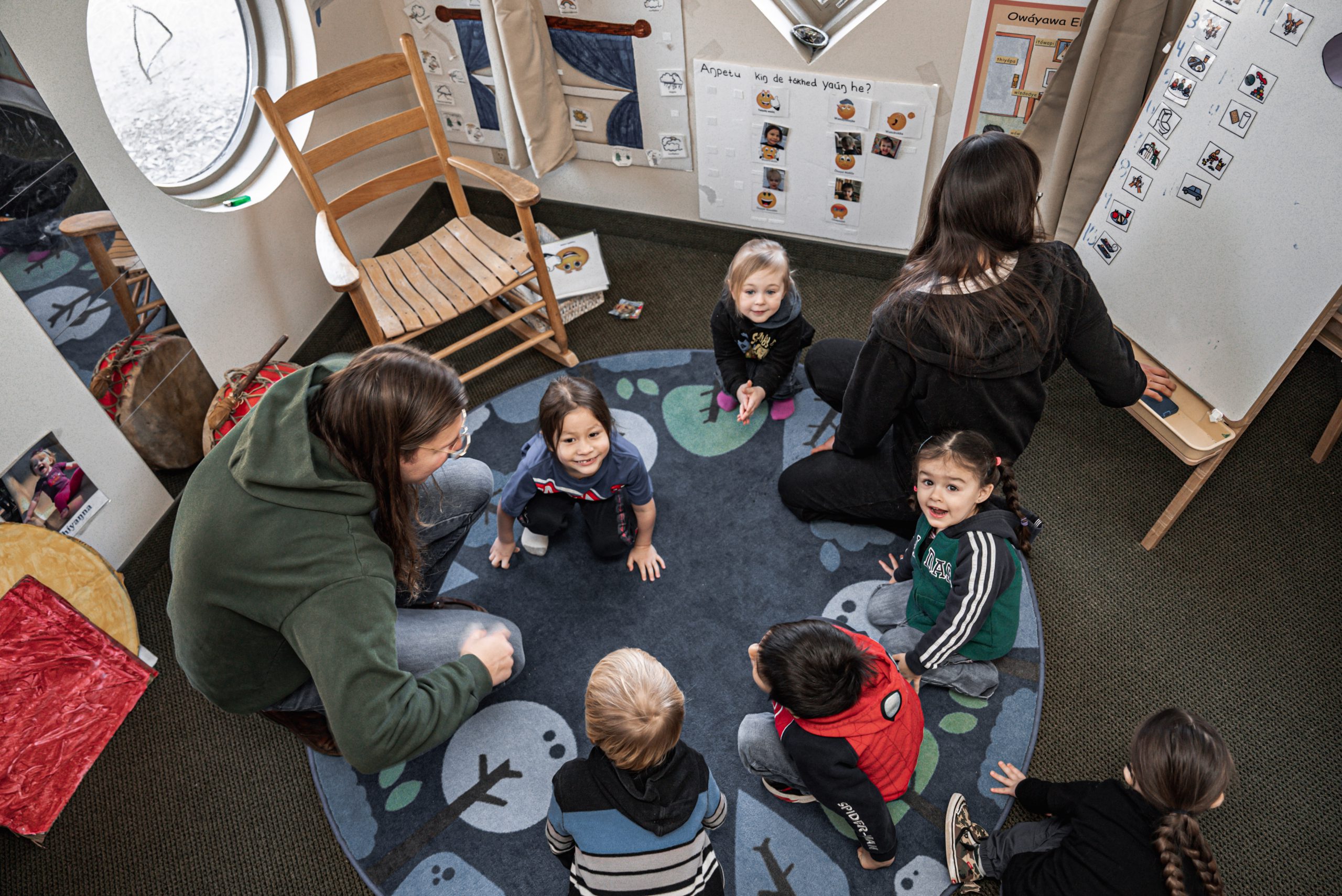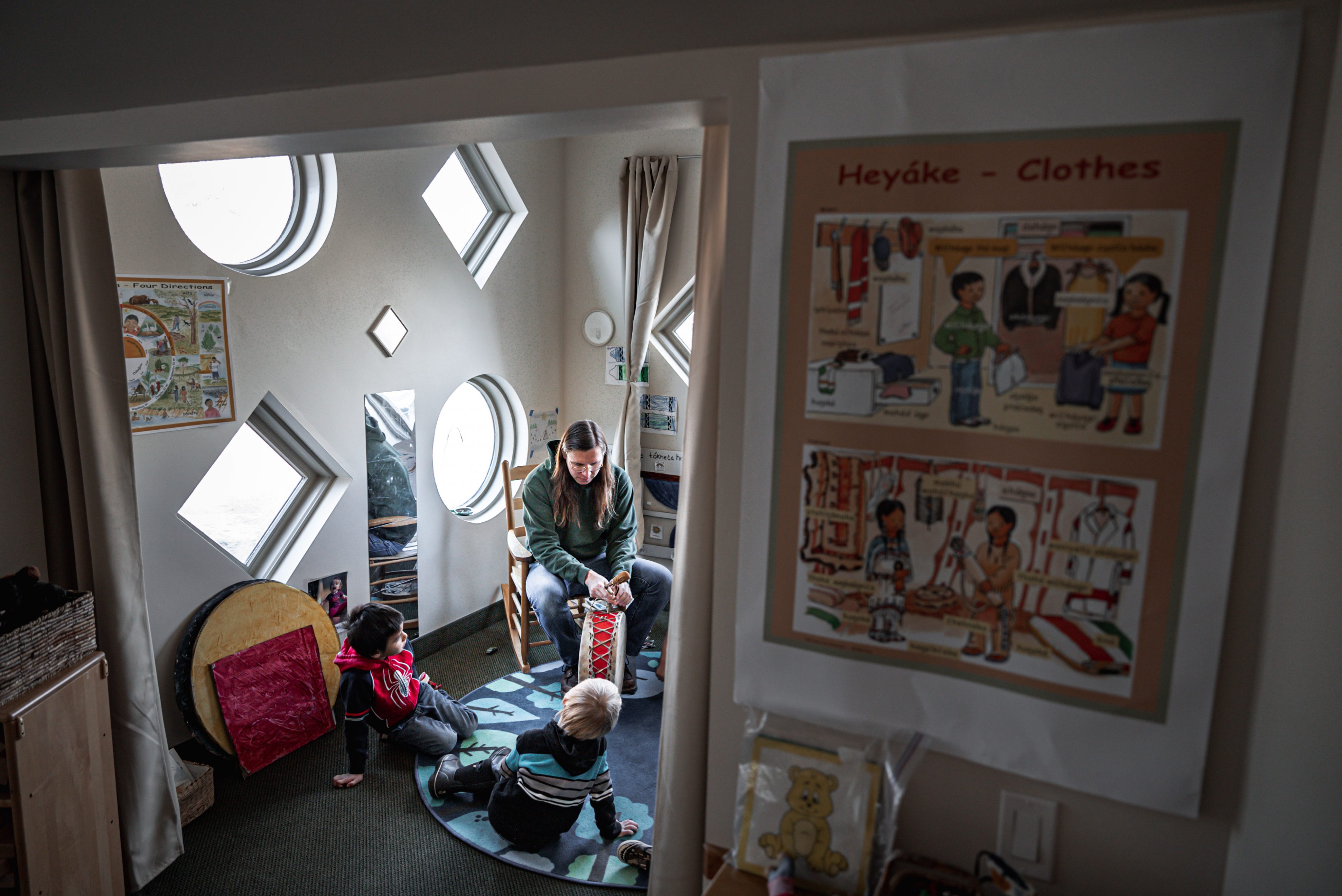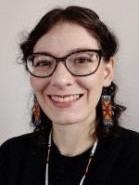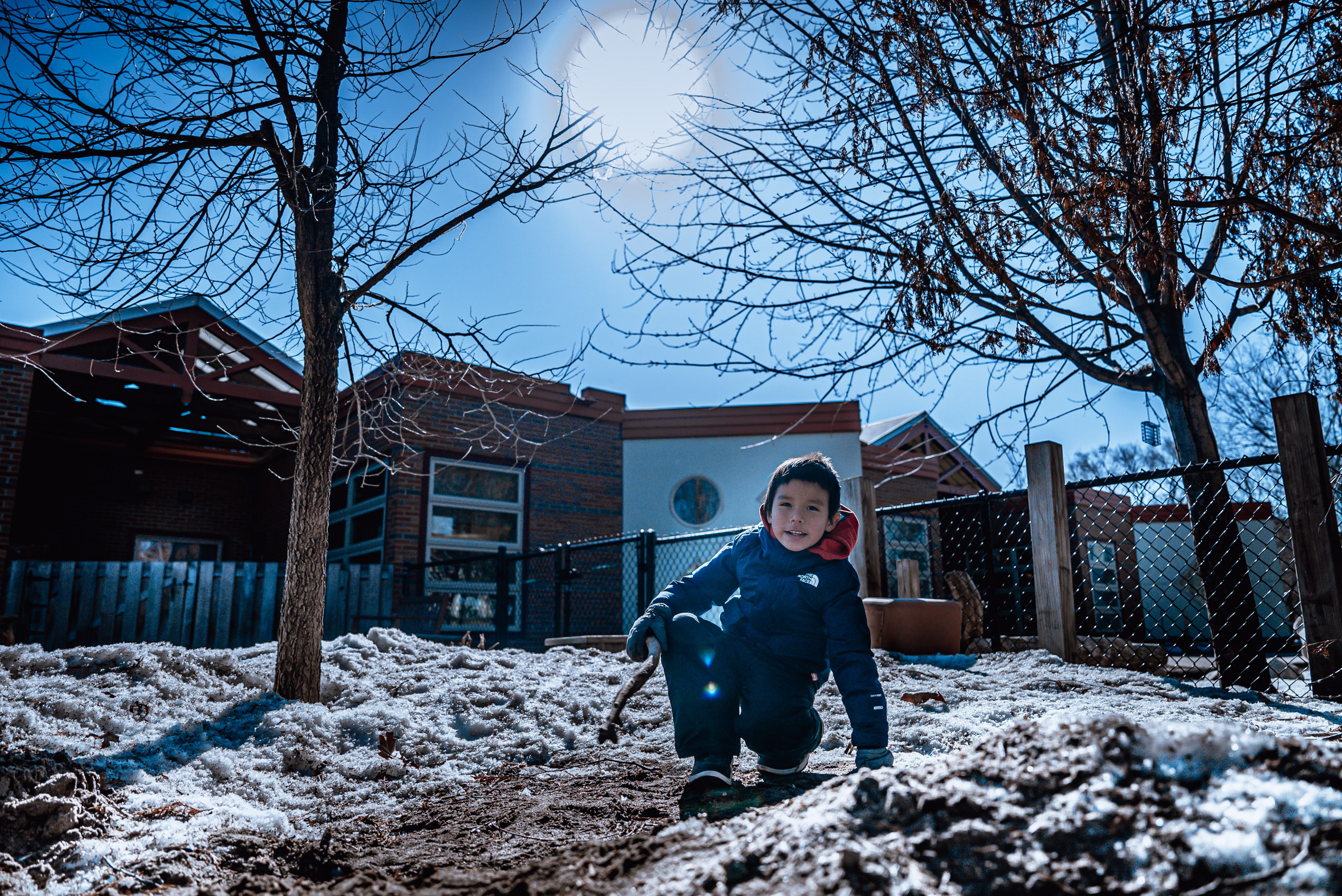
About
Dakhódiapi Wahóȟpi kiŋ ektá owás’iŋna yahípi kiŋ wašté. Dakhóta makhóče ed uŋthípi čha héuŋ iápi kiŋ de takómni uŋhdukínipi kte. Wahóȟpi ektá Dakhóta iápi kiŋ de theúŋȟiŋdapi k’a aŋpétu iyóhina uŋkíapi k’a uŋkúŋspepte. Wahóȟpi ektá thaŋkád uŋškátapi úŋkhaŋ thimáhed uŋškátapi, úŋkhaŋ zaníya waúŋtapi k’a wóyakapi uŋkúŋspepi k’a dená owás ečháuŋk’uŋpi ičhúŋhaŋ Dakhód uŋkíapte. Dakhód iápi kiŋ uŋhdúkinipi awáuŋčhiŋpi.
UMN sits on Dakota homelands and is home to many Očéthi Šakówiŋ people. The goal of the Dakota Language Nest is to breathe new life into the Dakota language, such that it lives on as the original language of Minnesota. In Dakota, it is said that šičéča kiŋ wakháŋpi, children are sacred. By returning their Dakota language to the children through play, outdoor exploration, art, and loving interactions, we allow the children of Minnesota to lead the way toward a bright Dakota future. Read more in Connect Magazine.

When families enroll a child in the Nest, they become part of our language community. Parents are asked to commit to our Thiwáhe ed Uŋkúŋspepi Family Education Program, which involves in-person activities once per week, and 3-4 hours of independent language learning activities. The language is returned to the children within the walls of the nest, but the goal is for them to have access to it, whenever they are in their home, with their siblings, and with their grandparents. Enrollment in the Nest is limited in order to optimize the ratio of adults to children. Dakota families and those who are part of the UMN community are given priority to enroll. It is our goal to enroll all families who are committed to language revitalization, regardless of financial resources. Please do not hesitate to apply; scholarships are available.
Learn more
Waúŋspewičhakhiyapi | Teachers
We are thrilled to introduce you to our experienced, knowledgeable, and gifted teaching team! In addition to these dedicated staff members, there may be Student Teachers in classrooms at different times, or they may observe activities from outside the room. Part of the goal of the Dakota Language Nest is to train future early childhood and language immersion teachers.
Wóokiye Wiŋ | Katie Jo Bendickson, Lead Teacher

Wóokiye wiŋ is Sisseton Wahpeton Dakhóta. She is an artist, illustrator, writer and educator. She has received a BA in American Indian studies with a language track from the University of Minnesota Twin Cities and an early childhood education diploma from Minnesota West Community and Technical College.
Wóokiye Wíŋ has taught preschool and high school in Saint Paul, Minneapolis, and Granite Falls, MN, as a Dakota Language instructor. Her mentor for the Dakota language was the respected elder Caroline Schommer of Upper Sioux Community. Much of her young life was spent on her mother’s reservation, Fond du Lac Reservation in northern Minnesota, before her family moved to her father’s reservation at Upper Sioux Community in southwest Minnesota.
Wóokiye Wíŋ began her Dakota language journey in high school at Yellow Medicine Senior High. It wasn’t until college that she was captivated by the language and it transformed her self-identity and world view and helped her along her personal healing journey.
Wóokiye Wíŋ started her job as lead teacher at Dakhóta Iápi Wahóȟpi in September of 2024. Her main teaching enthusiasm is nature-based and play-based learning for young children in the Dakota language medium. Wóokiye Wiŋ lives in Saint Paul with her husband and children. Both her parents are artists and teachers, and she continues that tradition.
Danielle Cloutier, Assistant Teacher

Dani identifies as both Dakhóta and Wašícu. Her relatives are enrolled at Bdémayaṭho Oyate (Shakopee Mdewakaŋton Sioux Community), but she is not enrolled herself.
In pursuit of learning more about her mother’s ancestry and traditional ways of being, she started studying beginning and beginning-intermediate Dakhóta intermittently since 2022 in remote community classes through the Minneapolis American Indian Center (MAIC) and Dakhóta Iápi Okhódakičhiye (DIO). She gives thanks to her teachers Raine Cloud, Sišókaduta, Čantémaza and Monika, and Josh Dunn for all their hard work in teaching the culture and language.
Dani started volunteering at the Wahoȟpi, assisting teachers at DIO’s language camps, and then transitioned to a substitute teaching assistant role in the Wahoȟpi in Summer 2024. She has a BA from the University of Minnesota Twin Cities with a minor in teaching ESL and about three years of previous assistant teaching experience at Fraser School. Her main teaching interests include engaging with children around a sense of place, exploring consent and power during conflict resolution, and guiding children in rough and tumble play.
She lives in south Minneapolis with her husband and Frenchie the calico cat.
Alexa Yellow Hawk, Assistant Teacher

Bio coming soon!
Owáyawa Thípi | Location

The Dakota Language Nest occupies a beautiful space within the newly purpose-built Child Development Laboratory School on the U of Minnesota campus, near Dinkytown, Bde Óta Othúŋwe (Minneapolis). The rooms are filled with natural light and natural materials, there is a dedicated art space, and naptimes involve a star projector to facilitate learning Dakota traditional star knowledge. At least half of each day is spent in our dedicated outdoor space, which includes gardens in planter boxes with traditional medicine plants, cedar trees, and an outdoor mud play kitchen. We also take regular trips to nearby parks, landmarks, and wooded areas.
Wóuŋspe | Curriculum
The curriculum is developed based on Dakota traditional lifeways, children’s interests, and the environment around us. Children learn through the Dakota language and through play and projects. Here are some of the ways we spend our day:
- Hípi ka Yútapi – Arrival & Meal
- Wóčekiye ka Azídya – Prayer & Smudging
- Dowáŋpi – Singing
- Iyékiyapi – Identifying in Nature
- Thaŋkád okábdaya škátapi – Outdoor free play
- Wóyakapi (naȟ’uŋpi) – Storytelling
Wóiwaŋǧa | Questions
Interested in learning more and scheduling a tour? Have questions? We’d love to hear from you.
Support Us
Make a gift to support the Dakhódiapi Wahóȟpi.
